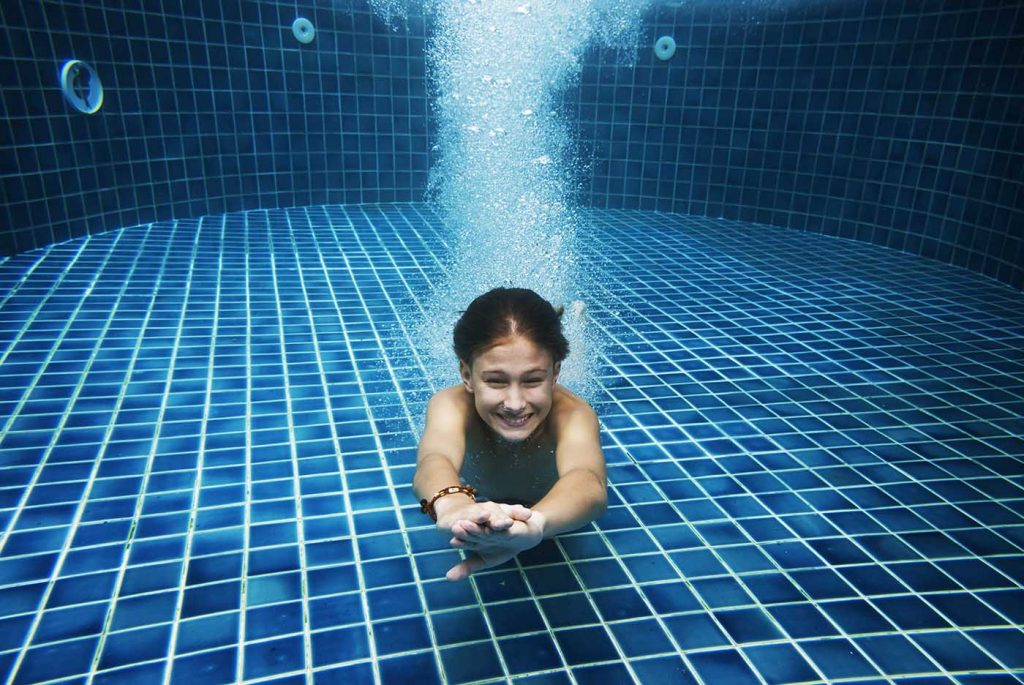In this article, we are going to determine how you know if your pool needs resurfacing. However, first, we will establish why it is an important and worthwhile step to take. The fact is, if you’re thinking about it, then the original finish must be cracked and peeling, or perhaps worn and discoloured. If that is the case, then why allow it to fall further into disrepair, when instead, you can start fresh instead?

Bear in mind that most people who skip the new paint job or replastering, slowly fall out of love with their pool. They begin to use it less and less, because the water doesn’t look quite so appealing when the finish is discoloured. Then the cleaning occurs less frequently, and the pH levels go to the dogs. Before they know it, their pool is just a glorified pond without any fish.
Yes, you should resurface your pool, because it will remind you how awesome it is to actually have a swimming pool in your home. To be able to swim whenever you choose. To be able to have fun family BBQ’s and enjoy a refreshing form of exercise each morning.

Having your pool restored and properly cared for reminds you to take pride in your swimming pool. It is an extension of your home after all.
All that being said, how do you determine whether your pool actually needs resurfacing? Here are some tell-tale signs:
1 – Peeling Plaster
Peeling plaster is arguably the biggest giveaway that its time to resurface. Keep an eye out near the steps and floor of your pool. If it’s peeling or “spalling”, then it tends to be due to low calcium or pH levels in your pool and is practically impossible to repair.
2 – Rough Texture
Have you felt random spots on your swimming pool that feel especially rough on the skin? If you or a family member have been scuffed a couple of times, then it could be an indication that the pool surface wasn’t professionally installed to begin with. These spots are not only unsafe, but unsightly too.
3 – Stains
An early and obvious sign that your swimming pool needs resurfacing is stains that you are unable to wipe off the surface. These can be due to an algae bloom or even minor cracks. In any case, they are the first sign of bigger problems that will need resolving.
4 – Chalky Residue
If your water tends to look cloudy or chalky around the edges, then this is likely cause for concern. Chalking almost always means that the pool surface is beginning to break down and will need replacing.
5 – Dropping is Water Level
If you find yourself having to constantly refill your swimming pool, then you probably have a leak on your hands. The trouble is, these can be exceptionally difficult to detect but it tends to point towards plaster fatigue or poor fitting. In any case, you’ll need to think about resurfacing to fix it.
6 – Cracks
If you are starting to see cracks that resemble spiders’ webs in your swimming pool, then this is an issue that will need resolving via resurfacing.
7 – Structural Cracks
If you can see large cracks in your swimming pool, then it could be beyond an aesthetic issue and threaten the integrity of the pool itself. If you spot large cracks, then you must consult a professional pool resurfacing company to assess the situation for you.
If you are still not certain if your swimming pool is quite ready to be resurfaced and you want to know for certain, then you can always book an inspection to assess what stage your swimming pool is at. A reputable company like West Coast Pool Resurfacing will be able to advise you accordingly.


